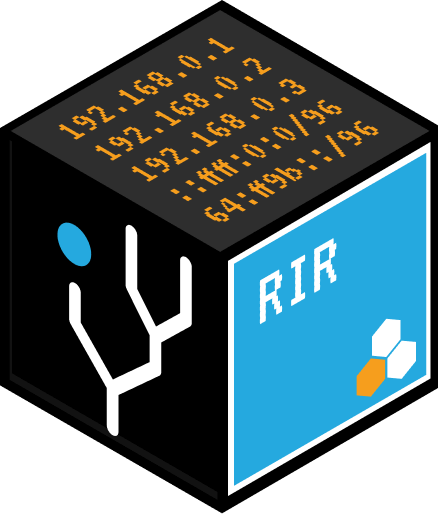From multiple wireless devices per person, to massively dynamic virtualization, to the vision for a “smart” energy-efficient home and much, much more, everything in the entire world is becoming “connected” and this is giving rise to the “Evernet.”
But this can’t happen without transitioning from IPv4 to IPv6 because everything that connects to the Internet has to have a unique Internet Protocol (IP) address and there are a finite number of possible IPv4 address combinations. It is no longer a question of if, nor when, the Internet has run out of IPv4 address space.
In March 2011, the Internet’s governing body, IANA (Internet Assigned Numbers Authority) assigned the final five blocks of IPv4 address space to the five Regional Internet Registries (RIR). APNIC (Asian Registry) has already exhausted their final allocation, the four remaining registries will follow suit by the end of the year or early next year.
And because of its complexities, along with an ocean of new business opportunities, the transition is being delayed. Domestically, we are falling behind other countries as we did with network/telco wireless technology when 3G came out.
For those unfamiliar with IPv4 exhaustion and IPv6 uptake, imagine if the US ran out of telephone number combinations. One solution might be to extend the number of digits from 10 to say 40. Metaphorically this is what IPv6, the next generation Internet protocol does.
We started 6connect in February of 2009 as we saw a lack of cohesively planned, Internet infrastructure management solutions for the Evernet. Coming out of the ISP, Colocation, Managed Hosting/Cloud world, we embarked upon “unifying Internet infrastructure” thru a holistic approach and unified view into all things IT and facility related. We realized rather quickly that we were a bit ahead of the game as the markets’ were either interested in more datacenter cooling optimization (immediate pain then) or consolidation or extensions to the cloud (not to mention the ongoing search for the next Google or Facebook.). 6connect focused on tackling one of the fundamental aspects of the transition to the Evernet, the upgrade from IPv4 to IPv6, and specifically the network architecture and IP management automation as our go-to market product strategy.
The challenge, and thus opportunity for investors, is that IPv6 is not backwards compatible. All of the hardware and software associated with the Internet, as we know it, must undergo the upgrade in order to be able to communicate seamlessly with IPv6 addresses going forward. The challenge for investors will be in determining where to deploy capital to take advantage of this massive inflection point. There is a report by the U.S. Deptartment of Commerce estimating that it will take $25-$75 billion to pay for the transition, and that doesn’t even include the ongoing operation of the new standard and this is only in the USA.
Network infrastructure management has traditionally been a very manual process. Even large service providers still manage the IP addresses of their large networks with flat files, spreadsheets and simple databases, with little or no automation. In an IPv4 world, this was possible, but as the number of Internet-enabled devices increases exponentially, and virtualization and cloud computing create very dynamic environments, it has become an increasingly complex task. This becomes an impossible task now with the adoption of IPv6.
6connect is looking to do for the Network Engineer what Rackspace did for the Systems Engineer (server management and automation, eventually being outsourced), that is to automate the process of network infrastructure management.
Because of the complexities in migrating to IPv6 and a fundamental mis-understanding of its importance, VCs have been slow to invest in this sector as many network professionals in the US and around the world have been delaying the inevitable migration (until now).
There are some established firms raising dedicated funds to address these opportunities, and the impacts such a change can have on overall IT infrastructure, hosting and cloud, healthcare technology, small business, even apparel (Nike wants to be an Evernet-related health lifestyle company with customers being connected from their shoes!) is staggering.
So where to invest is still the question at hand. There are 4 major areas that will be most dramatically impacted by this new protocol and shift to the Evernet.
Hardware (plumbing), all networking hardware must be upgraded including routers/switches, servers, DNS servers, security devices, back office equipment, home CPE equipment (modems, mobile phones), and applications. Traditional hardware vendors like Juniper and Cisco are working hard to build to this new protocol, and they have faced many challenges along the way. IPv6 still resembles the wild-west, with standards and best current practices yet to be defined. This is paving the way for new, more nimble vendors and solutions that are not constrained by old IPv4 protocols or mind sets.
Updating network architecture, address planning, the network topology changes fundamentally in an IPv6 world. Every organization will struggle to migrate to a new IPv6 address routing topology and hierarchy to support their core infrastructure and the edges of their network. This plan needs to consider the operation requirements, transition strategy and network infrastructure components within the network of operations. This is extremely important process because the architectural choices involving aggregation of the address space can make the management and robustness of the network very efficient or very inefficient. This process has become daunting in an IPv4 world with the rise of virtualization and mobile devices alone. In an IPv6 world, this process is impossible without automation like that from 6connect.
Security, It is anticipated many new threats and vulnerabilities will arise as attackers devote more attention to IPv6. We’ve found very few security vendors today with a clear plan or concept as to what or how their services will be impacted in an IPv6 world. In IPv6 every device has a unique identifying address and no longer will IPv4 security measures work in this new world. This creates a massive cascading problem for security vendors going forward. It will be very interesting to see how this plays out.
Transition Mechanisms, to secure the interoperability between IPv4 and IPv6, it will be very important to identify the different transition mechanism options available, including dual-stacking, tunnels and translation mechanisms. This is a massive undertaking, especially for large networks, and vendors that can simplify, automate and secure the process will be in very high demand.
Current Investors in the space, like Hummer Winblad and Alsop-Louie, are representative of the vanguard of firms that has identified this massive inflection point, and begun making investments here. Hummer-Winblad invested in 6connect and Alsop-Louie has raised a fund specific to IPv6 totalling $98M. Gilman Louie general partner at Alsop Louie Partners recently stated in reference to IPv6, “you never want to predict the timing of the market, but if you do, you get rich.” Alsop and Louie have already made several investments from their IPv6 fund.
For 6connect, these investments are a welcome sight bringing visibility to what is a quickly emerging trend. From our point of view, it is perfect timing for network automation software that tackles one of the most important and challenging aspects of this transition- Network architecture and IP management for IPv6 and that will eventually enable the Evernet.
Related keywords: Network Automation, Network Management, Peering, Systems Administration, IPv4, IPv6, IPAM, DNS/DHCP, Peering







